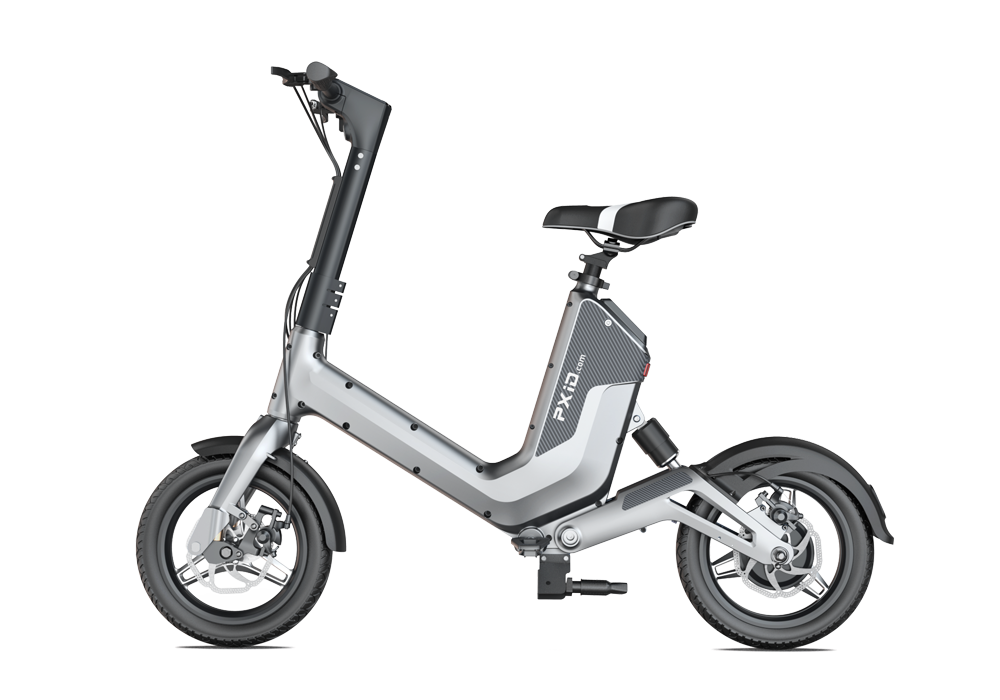Liu Suwen, chairman of the China Bicycle Association, said at the recent "New National Standard" lithium battery travel ecological chain summit that during the "14th Five-Year Plan" period, electric bicycles will become lightweight and lithium-ionized; upstream and downstream industries must develop lithium battery systems and vehicle structure safety. Matching joint research; continue to conduct in-depth research on the safety of lithium batteries with universities and scientific research units; strengthen the construction of industry innovation platforms; continue to strive for a better development environment for the electric bicycle industry through the efforts of all parties.
Accelerate digitalization
Since the implementation of the new national standard in 2019, electric two-wheelers have shown four new trends: new national standard, new power, new model, and new ecology. It is expected that in the next few years, the replacement of lead-acid by lithium batteries in the field of electric bicycles will further accelerate, and the market size will reach more than 100 billion. Enterprises in the electric bike industry chain that have been deployed in advance will usher in an excellent development opportunity. According to data from the Starting Point Research Institute (SPIR), the penetration rate of lithium-ion electric bicycles in my country in 2018 was 13%, and in 2019 the data reached 25%. SPIR predicts that the penetration rate of lithium-ion electric bicycles is expected to reach 40% in 2020, 60% in 2021, and 100% in 2025.
As the urbanization rate increases and the demand for short-distance travel increases, electric two-wheelers will continue to maintain a steady demand. Liu Suwen said that especially under the influence of the new national standard and the epidemic, industrial transformation and upgrading has become imminent. He believes that the trend of lithium-ionization and lightweight is unstoppable, intelligence and digitization are indispensable, energy-saving is still a powerful advantage of electric vehicles, and standardization is the core guarantee for the healthy development of the industry. The current industry must firmly grasp the era of lithium-ionization and accelerate its promotion and advancement. Digitalization of electric vehicles.
As the scale of e-commerce and the coverage of online life service businesses continue to increase, the demand for electric bicycles for food delivery and express delivery is experiencing rapid growth. At the same time, the shared electric bicycle business model is driving new market demand, and the two-wheeler power exchange model that matches this is also developing rapidly.
Targeting short-distance travel needs
my country’s electric short-distance travel market totals 370 billion to 420 billion yuan, of which the C-end core category will bring a market scale of 200 to 210 billion yuan, including 25 million electric two-wheeled bicycles, 49 billion yuan; and the B-end and The service market scale is 170 billion to 210 billion yuan, including 3 million shared trips, which is nearly 10 billion yuan. The market for power exchange terminals is optimistic up to 100 billion yuan, and the after-maintenance market is 70 billion yuan.
Another agency predicts that the scale of shared motorcycles is expected to exceed 5 million in 2020. As the three major Internet platforms increase their investment, the penetration rate of shared motorcycles in third- and fourth-tier cities will maintain a rapid growth trend. Shared motorcycles will be shared in 2023. The number of launches may exceed 8 million or even higher.
The new national standard superimposes the development wave of shared power exchange. It is very important for two-wheeler OEMs to seize the development opportunities of lithium-ionization of two-wheelers. On the one hand, two-wheeler OEMs must target individual short-distance travel, food delivery, express delivery, sharing and other terminal application needs, develop a variety of lithium battery products that meet the new national standard, and quickly seize the market. This requires OEMs to further enhance their core competitiveness. On the other hand, in order to realize the large-scale replacement of lead-acid batteries by lithium batteries in the field of electric two-wheelers, OEMs must meet user needs in terms of safety, price, and after-sales service of lithium batteries. High demands.
Cost reduction through technological innovation is imminent
Lithium battery market dividend has arrived. Despite the rapid market development, the full-scale lithium-ionization of electric bicycles is still full of difficulties, including battery safety issues that need to be improved, battery costs remain high, the lack of universal industry standards, and the after-sales service system is not perfect, etc., industrialization The process is slow.
Specifically, there is a large gap in the progress of lithium-ionization in different regions in China: Tianjin plate is the fastest to lithium-ionization, followed by Wuxi plate, and the remaining plates are the last. In addition, the two-wheeled vehicle head companies are more proactive in the lithium-ionization, and the waist and tail companies basically adopt a "stability-oriented" strategy based on development costs and market risks.
The unanimous consensus in the industry is that among these, battery safety and technological breakthrough are the top priorities. On the one hand, there are frequent safety accidents of electric bicycles, and the safety of lithium batteries has become the sword of Damocles hanging on the head of the industry. The problem is solved urgently. On the other hand, the electric bicycle market is extremely cost-sensitive, forcing the price of lithium batteries to continuously drop. Breaking the path of lithium battery cost reduction through technology is also an arrow that has to be launched.
